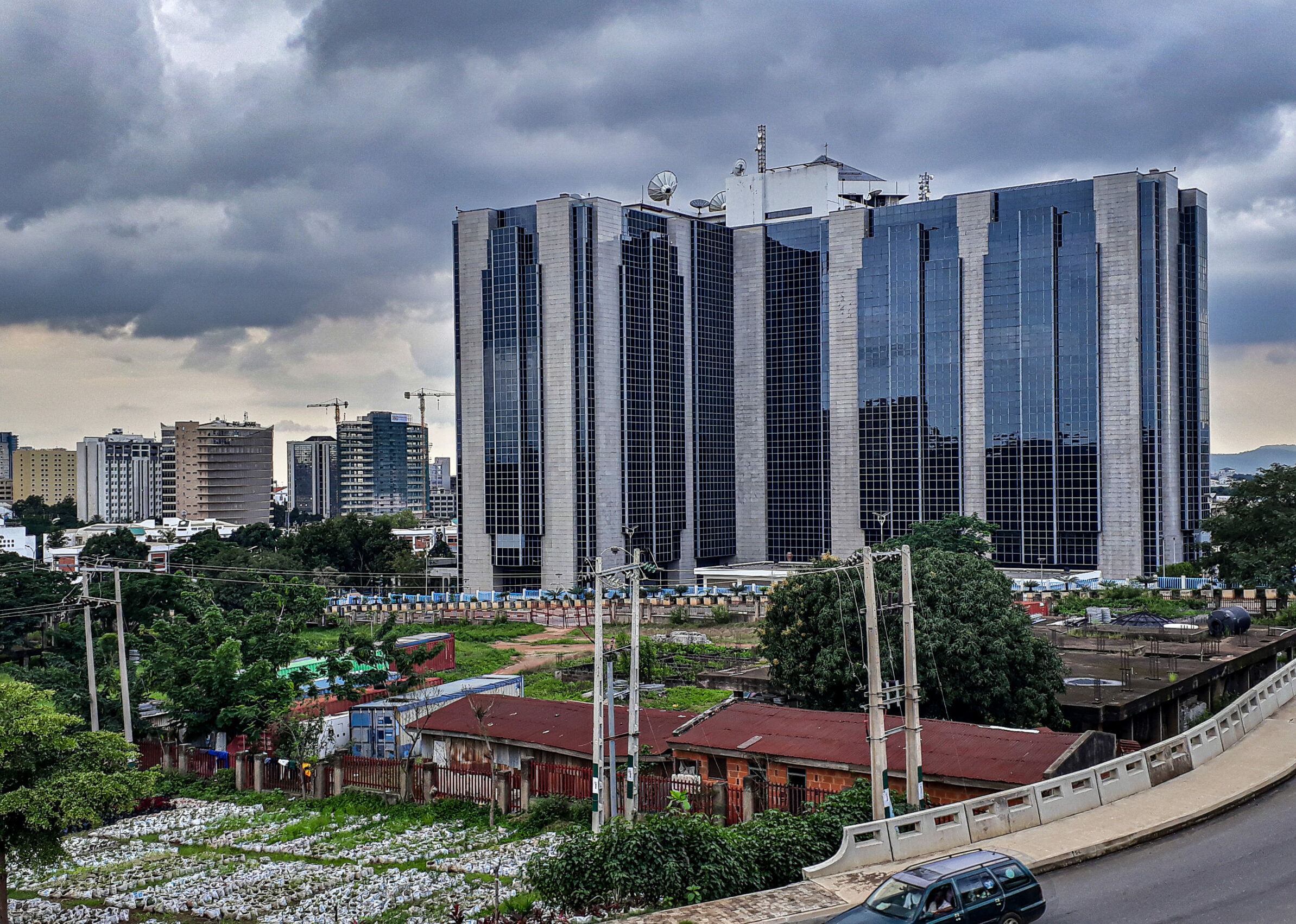Introduction
We started this series recently, with an x-ray of policy formation and its implementation, the constitutional status of forest vis-à-vis the States and the Federal Government, and later addressed the issue of policy Unitarianism in disguise, and also a review of indigenous security models and local recruitment of local guards. Today, we shall consider the challenges of evolving the rights and strategy between the forest and firepower; we shall then analyse the question: Are
Between the Forest and the Firepower: Finding the Right Strategy
The Forest as Nigeria’s New Battlefield
Nigeria’s forests, once treasured for their ecological richness and environmental contributions, are increasingly viewed through the lens of national security. Spanning over 10 million hectares which is about 10% of the total land area of Nigeria, Nigeria’s forest reserves are now being infiltrated by violent actors and used as operational bases for bandits, insurgents, arms traffickers, and cross-border criminal networks. These reserves especially those in Kwara, Niger, Benue, Taraba, Zamfara, Kaduna, and Oyo have morphed into de facto war zones, where traditional policing is rendered ineffective and the military often finds itself in reactive mode.
One particularly troubling example is the Kainji Lake National Park, a protected area that spans the borders of Kwara and Niger States. Though it is officially under Federal protection, its vast and difficult-to-monitor terrain makes it a prime corridor for terrorist and bandit movements. According to security reports from the Nigerian Army’s 8 Division, several armed groups have taken advantage of the park’s proximity to Nigeria’s northwestern and central States to establish hidden bases, smuggle arms, and coordinate attacks.
Similarly, the Old Oyo National Park, which straddles Oyo, Kwara, and Niger States, has become a hotspot for criminal activity. Local intelligence from communities surrounding the park, indicates that bandit groups expelled from Zamfara and Katsina have found refuge in this forest. These criminal elements exploit the remoteness of the area and the absence of a permanent security presence, to regroup and launch attacks on nearby settlements.
Beyond national parks, numerous ungazetted forests especially in the Middle Belt serve as strategic hideouts for Fulani militia groups, foreign mercenaries, and rogue elements linked to organised crime. In Benue State, Governor Hyacinth Alia, has repeatedly warned of incursions by foreign terrorists allegedly linked to cross-border herder militias. The Upper Ogun Forest Reserve, a large forest block in Kwara, has also come under scrutiny, following reports that Mahmuda terrorist group members use it to transit between Nigeria and the Republic of Benin.
The implications of these developments, are profound. Without forest security, Nigeria not only risks losing its forests to environmental degradation, but also ceding large swaths of land to non-State actors, thus, turning forest reserves into breeding grounds for violent extremism. Yet, while the urgency to act is undeniable now, the quality of response matters more than its speed.
Deploying undertrained or poorly equipped forest guards into these volatile environments, would be akin to sending lambs into a lion’s den. The intelligence, terrain mastery, and firepower required in such engagements go far beyond the remit of conventional paramilitary forces. You cannot send men with shotguns, into a forest ruled by terrorists with RPGs. This is not hyperbole, it is a stark reality, backed by recurring video evidence of bandits showcasing sophisticated weaponry, satellite communication tools, and, in some cases, armoured vehicles.
Military Might vs Paramilitary Prowess: A Strategic Dilemma
At the heart of Nigeria’s forest security conundrum, lies a fundamental strategic mismatch. On one side is the proposal to deploy lightly armed forest guards; on the other is a threat landscape populated by insurgent groups with military-grade capabilities. Nigeria remains one of the most affected countries by terrorism, with Boko Haram, ISWAP, and multiple bandit groups shifting focus from urban bombings to rural forest insurgency.
Reports confirm that many of these groups are now entrenched in forests stretching from Zamfara to Taraba, taking advantage of limited surveillance and sluggish security response. These criminal outfits reportedly employ rocket-propelled grenades (RPGs), improvised explosive devices (IEDs), drones and night-vision equipment, a sophisticated arsenal far superior to the basic AK-47s or pump-action rifles many forest guards are expected to wield. This power disparity raises a serious question: Can forest guards, even in significant numbers, hold their ground against such adversaries?
A Desirable Narrative
The answer, quite evidently, is no, at least not alone. This does not render the forest guard model irrelevant, but it necessitates a reimagining of their role. Forest guards should not be conceptualised as primary combatants, but as intelligence operatives, terrain scouts, and first responders. Their role must be complementary, not confrontational, with local guards. Embedded within local communities, they are best positioned to detect unusual movements, provide early warnings, and assist in planning police or military interventions.
Such integration would mirror the highly successful model employed by the Civilian Joint Task Force (CJTF) in the North-East, which supported the Nigerian military in combatting Boko Haram. The CJTF did not go to war with terrorists alone. Rather, they provided community intelligence, identified suspects, and enabled smoother military operations. The same should apply to forest guards. Deployed as community embedded liaisons, their greatest strength lies not in brute force but in proximity, familiarity, acculturation and adaptability. They must work in synergy with the local guards, Army, Police, DSS, and NSCDC, ensuring that information gathered at the grassroots level informs strategic planning at the Federal level.
Another vital element, is equipment and communication infrastructure. In many rural areas, mobile networks are poor, and emergency communication is non-existent. Forest guards should be equipped with satellite phones, GPS trackers, surveillance drones, and bodycams. Training must include combat survival, hostage negotiation, and tactical withdrawal protocols. It’s not enough to train them how to fight; they must also learn when, where and how not to fight.
The Path Forward: A True Federal Partnership
While President Tinubu’s forest guard initiative is ambitious and well-intentioned, its execution must be shaped by constitutional fidelity, operational pragmatism, and community trust. Nigeria’s diversity requires policies that are locally adaptive, but nationally coordinated. A strategic roadmap should therefore, include the following:
Legislative Reform and National Forest Security Act
This Act should define the parameters of forest security, across the Federation. It must empower States to create, manage, and control forest guard units while providing room for Federal assistance in the form of funding, training standards, and interoperability protocols with Federal security services. The Act should also clarify jurisdictional boundaries, ensuring there’s no operational conflict between Federal and State forces.
Indigenous Recruitment and Decentralised Command
Only indigenous recruits, drawn from host communities, should serve in forest guard units. This principle ensures language proficiency, cultural awareness, and community acceptance. State Governments, in partnership with local traditional rulers, should drive recruitment processes, with background checks vetted by local Police and DSS operatives. This will mitigate risks of infiltration by criminal elements.
Technology-Driven Surveillance Infrastructure
Equipping forest guards with modern tools is not optional; it is imperative. Drone surveillance, motion-triggered cameras, satellite-linked walkie-talkies, and forest mapping systems should be deployed. The National Space Research and Development Agency (NASRDA) and Nigerian Communications Commission (NCC) can play a supporting role, in developing and deploying such technologies.
Strategic Federal Support, Not Operational Control
The role of the Federal Ministry of Environment and Office of the National Security Adviser must be clearly coordinative, not administrative. Federal agencies should support States through centralised training academies, logistics depots, and intelligence sharing platforms, but, the command structure should remain domiciled in State Ministries or specially created State Security Commissions.
Community Accountability and Oversight Boards
Every State should establish Forest Guard Oversight Committees composed of community leaders, the youth, civil society groups, religious figures, and security agencies. These committees will track operations, address complaints, and ensure that forest guards act within the bounds of law and ethics. Regular town hall reports and audits, should be mandated.
Integrate Environmental Protection and Counter-Insurgency Goals
One major flaw in Nigeria’s security strategy, is the siloed approach to environmental policy and national security. The forest guard initiative offers a unique opportunity to bridge this divide. Forest guards should be cross-trained in both environmental protection and tactical field surveillance, thereby serving a dual purpose: preserving Nigeria’s biodiversity, while countering environmental crimes that fund insurgent activities.
Illegal logging, poaching, and charcoal trading are multi-billion-Naira black-market economies that fuel insecurity in rural areas. According to the United Nations Office on Drugs and Crime, environmental crimes in West Africa generate funds that are often funnelled to criminal cartels and armed groups. A forest security force that understands these dynamics, can better dismantle such networks.
It is imperative to partner with the Federal Ministry of Environment, Nigerian Conservation Foundation, and international organisations like UNEP, to embed environmental crime detection into forest guard training modules.
Establish a Centralised Forest Intelligence Command
Given the complexity of forest based criminal operations and their links to wider terrorism and transnational crime, it is essential to build a dedicated forest intelligence infrastructure. This unit, the Centralised Forest Intelligence Command (CFIC), should be a joint inter-agency platform bringing together the Police, NCDC, DSS, Military Intelligence, Nigerian Immigration Service, local guards and Forest Guard Commanders from each State.
CFIC would use advanced tools such as geospatial intelligence (GEOINT), signals intelligence (SIGINT), and drone reconnaissance to provide real-time threat mapping, track insurgent movements, and anticipate forest-to-urban migration of threats. Such an initiative would vastly improve response time, and prevent security breaches before they happen.
The CFIC should be integrated into Nigeria’s National Security Architecture under the supervision of the National Security Adviser, but operated through a State Federal coordination model with joint personnel and interlinked command centres.
Promote Cross-Border Forest Security Cooperation
Given that Nigeria shares porous forest borders with Benin Republic, Niger, Chad, and Cameroon, it is vital to recognise the transnational dimension of forest insecurity. Bandits and militants frequently move across these borders, exploiting weak surveillance and diplomatic inertia.
Nigeria must lead in establishing a Regional Forest Security Pact, in collaboration with ECOWAS and the African Union (AU) security platforms. This pact would promote joint patrols, shared intelligence, coordinated raids, and the establishment of joint forest monitoring stations in border regions like Borno, Taraba, Cross River, and Sokoto.
The Ministry of Foreign Affairs should work with ECOWAS to initiate bilateral and multilateral forest security agreements, underpinned by joint training programmes and extradition protocols for forest-based offenders.
Conclusion
Where the Trees Stand Tall, So too Must the Constitution
In the final analysis, Nigeria’s Forest Guard initiative under President Bola Tinubu offers more than just a policy experiment; it presents a litmus test for the country’s commitment to Federalism, local empowerment, administration and smart security strategy. The forests in question may be dense with trees, but the issues surrounding them are denser still: constitutional authority, operational viability, regional identity, and national unity.
We have seen how the forests have evolved from mere ecological zones into the dark sanctuaries of insurgents, traffickers, and mercenaries. We have seen how well meaning central interventions, if not delicately structured, can become bulldozers flattening both local agency and constitutional principles. And, we have seen how a locally grounded, technologically equipped, and constitutionally-compliant model can actually work transforming the forest guard idea from a controversial headline into a security legacy.
But, let us be clear, you do not fix a leaky roof by installing a chandelier. You do not solve rural insecurity, with a flood of centrally deployed gunmen unfamiliar with the peculiar terrain or the tongues spoken therein. Instead, Nigeria must adopt a model that blends local trust with Federal muscle, traditional knowledge with modern technology, and constitutional wisdom with operational pragmatism.
The forest is watching, as are the communities who live by it, feed from it, and now fear it. Let us ensure that the guardians we appoint are not strangers in camouflage, but sons and daughters of the soil; trained, trusted, and tethered to the trees they are sworn to protect. After all, if we cannot see the forest for the law, we may end up losing both. And, in that case, the trees would not be the only casualty left standing in silence; our Democracy may also be. (Concluded)




